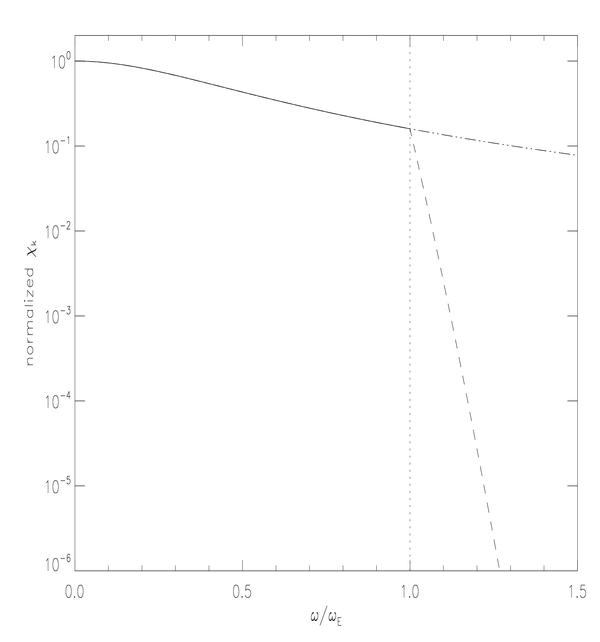Fig. 1

Schematic time-correlation (χk) versus normalized eddy frequency (ω / ωE) at k = 5k0 (i.e. in the inertial subrange such as kd ≫ k > k0), where k0 = 6.28 × 10-6 m-1. Note that the value of k0 does not influence the result. The solid line (resp. dashed triple dot line) correponds to the Lorentizan functional form of χk for ω < ωE (resp. ω < ωE). The dashed line corresponds to a Gaussian modeling (χk ∝ e − (ω / ωE)2) of characteristic frequency ωE. (we numerically verified that e − (τ / τE)2 is a good approximation of Eq. (7), see also Sect. 3.2). We stress that the sharp decrease the functional form given by Eq. (7), in the temporal Fourier domain, then justifies to consider ωE as a cut-off frequency. In other words, χk is computed according to Eq. (12).
Current usage metrics show cumulative count of Article Views (full-text article views including HTML views, PDF and ePub downloads, according to the available data) and Abstracts Views on Vision4Press platform.
Data correspond to usage on the plateform after 2015. The current usage metrics is available 48-96 hours after online publication and is updated daily on week days.
Initial download of the metrics may take a while.


